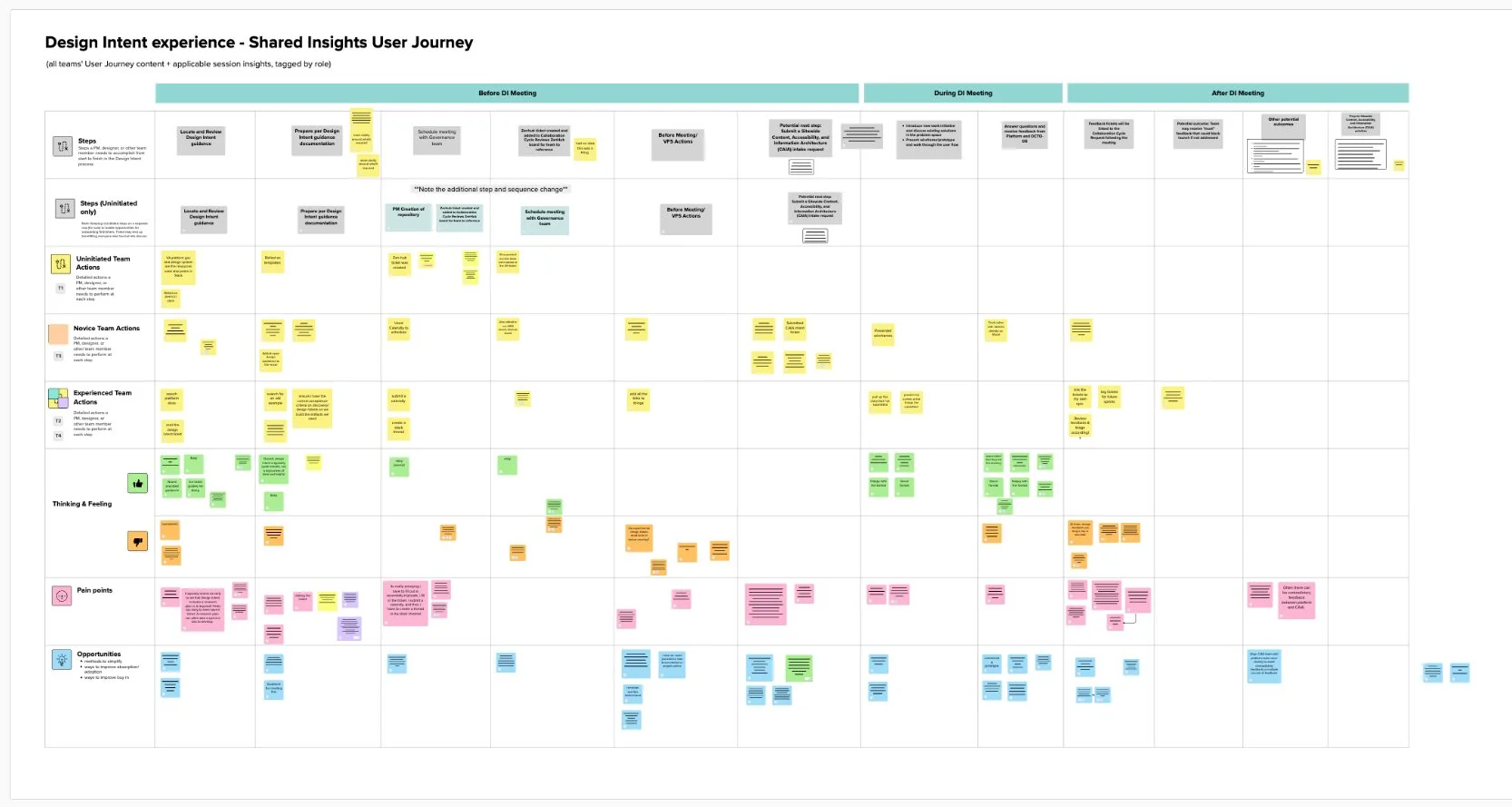Goals
Understand how teams are moving through the Design Intent process, and which roles are most impacted.
Identify the challenges and the differing needs of team members who are new to the process vs. those who are more experienced.
Evaluate opportunities to integrate guidance and enhance clarity, efficiency, adoption, and collaboration.
Process
I led the Service Design team's efforts to evaluate and provide recommendations for improving this critical touchpoint. From start to finish, this initiative took four weeks to complete.
Research Plan and Conversation Guide
I developed the research plan and conversation guide to facilitate casual, open dialogue that could be completed in 45-minute sessions, accommodating the schedules of busy team members. These would be moderated, remote interviews with as many members of the same team as could attend, and one notetaker/observer.
Recruitment
With the help of the Governance team, I recruited participants who fell into one of three levels of experience with the Design Intent touchpoint: those who had never participated but would soon, Those Who Had participated once, and Those Who Had participated two or more times. Participants included Product Managers, Tech Leads, Designers, Researchers, and Content Strategists.
Moderated Remote Interviews
I conducted four moderated remote interview sessions with platform teams over Zoom, with notes being collected in Mural for ease of analysis and synthesis later.
Analysis and Synthesis
With notes readily available in Mural, and Zoom recordings and transcripts to reference later for context, I planned and led analysis and synthesis sessions with my team. This allowed for fresh eyes to notice a range of interpretations and provided space for curious discussion and pattern recognition. We grouped insights into categories that I used to map user journeys, identify shared and role-specific pain points, and streamline recommendations.
Insights from our team synthesis exercise were grouped and added to a Shared Insights User Journey to depict patterns, common themes, and opportunities for improvement at each step.
Findings Readout
I presented detailed findings first to the Governance team so they could ask questions and begin thinking about their next steps. Later, I presented high-level findings to the wider VA.gov Platform teams during our sprint demo, with detailed insights available in shared collaboration spaces for anyone curious to see the work.
Result
Study Findings
Although documentation for Design Intent already existed, the process felt scattered across multiple tools (GitHub, Slack, Calendly), which increased cognitive load.
Many teams initially viewed Design Intent as intimidating or redundant until they participated and discovered that it was a friendly and collaborative process.
Teams valued feedback but wanted clearer expectations and more straightforward steps upfront.
What We Delivered
Journey maps: Individual journey maps per level of experience, and a journey map for shared attributes
Synthesized challenges and insights
Actionable recommendations
A readout deck to brief stakeholders and socialize findings with other VA.gov Platform teams
Impact
Our insights directly informed improvements to the Design Intent and Staging Review processes. The Governance team responded quickly to implement changes based on our findings.
